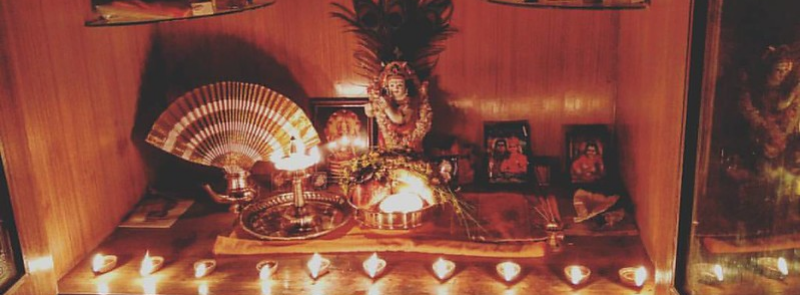
When It Occurs
Annually First Day of Chaitra Month
Timeline
Days Passed (629)
# Hashtags
#ChaitraSukhladi #HinduNewYear
Chaitra Sukhladi marks the beginning of the Hindu New Year in several parts of India and is observed on the first day of the Chaitra month in the Hindu calendar, typically falling in March or April. The festival coincides with the onset of spring and is a time of renewal, celebration, and spiritual reflection. Chaitra Sukhladi is primarily observed in North India, but similar New Year celebrations are held across the country under various names, such as Ugadi in Andhra Pradesh and Karnataka, Gudi Padwa in Maharashtra, and Cheti Chand for the Sindhi community.
Significance of Chaitra Sukhladi:
- Hindu New Year: Chaitra Sukhladi marks the beginning of the new year in many traditional Hindu calendars. It is the first day of the Chaitra month, which also begins the Vasant Ritu (spring season).
- Cultural Importance: The day is considered auspicious for starting new ventures, business, and personal projects. It is a time of cleansing and new beginnings, symbolizing the end of the old year and the start of a new one.
- Religious Significance: According to Hindu mythology, this day is believed to be the creation of the universe by Lord Brahma, the Hindu god of creation. It is also considered a time to worship Lord Vishnu, the preserver of the universe, and seek his blessings for a prosperous year ahead.
Rituals and Celebrations:
- Ritualistic Bath: Devotees begin the day by taking a holy bath, which is believed to purify the body and soul, preparing them for the new year.
- Prayers and Offerings: Special prayers are offered to Lord Vishnu, Lord Brahma, and Goddess Durga. People visit temples to seek blessings for good health, prosperity, and success in the coming year.
- Home Decoration: Homes are cleaned thoroughly, and new clothes are worn. People decorate the entrance of their homes with vibrant rangolis (patterns made with colored powders or flowers) to welcome positive energy.
- Festive Feasts: Traditional meals are prepared, often including a mix of sweet and bitter items. This combination symbolizes the acceptance of both joy and sorrow in life. Dishes may vary by region, but common foods include puran poli (sweet flatbread), khichdi, and halwa.
- Exchanging Greetings: Families and friends visit each other to exchange greetings and sweets, wishing one another a happy and prosperous new year.
Regional Variations:
- North India: In regions like Rajasthan, Uttarakhand, and parts of Uttar Pradesh, the day is celebrated with fervor as Chaitra Sukhladi. People observe traditional customs, offer prayers, and enjoy festive meals.
- Maharashtra (Gudi Padwa): Gudi Padwa is celebrated with great enthusiasm, with families hoisting a gudi (a decorated pole symbolizing victory and prosperity) outside their homes. It signifies the victory of good over evil and is a part of the broader Chaitra Sukhladi celebrations.
- Andhra Pradesh and Karnataka (Ugadi): Known as Ugadi in these states, the festival marks the New Year according to the Lunisolar calendar. Special dishes like Ugadi Pachadi (a mixture of jaggery, neem, tamarind, and mango) are prepared, symbolizing the various flavors of life.
- Sindhi Community (Cheti Chand): The Sindhi community celebrates Cheti Chand, which also marks the new year and is dedicated to Jhulelal, the revered saint of the Sindhi people.
Astrological Significance:
Chaitra Sukhladi is important astrologically as it marks the beginning of the new Lunisolar calendar. It is observed on the day after the new moon (Amavasya) in the Chaitra month. This day is considered highly auspicious for starting new projects and ventures, as it is believed that the alignment of planets and stars is favorable for growth and success.
Cultural and Social Impact:
- Family and Community Bonding: The festival fosters a sense of unity and bonding among families and communities. People come together to celebrate the new year, share meals, and exchange well-wishes.
- Rural Celebrations: In rural areas, Chaitra Sukhladi marks the beginning of the agricultural cycle for the year. Farmers pray for a bountiful harvest, and there are rituals performed to seek blessings for the crops.
- Cultural Performances: Traditional cultural performances such as folk dances, songs, and dramas depicting stories from Hindu epics are often held during the celebrations.
Mythological and Historical Context:
- Lord Brahma's Creation of the Universe: According to Hindu mythology, Chaitra Sukhladi is the day when Lord Brahma began the creation of the universe. As such, the day holds cosmic significance and is celebrated as a time of renewal and creation.
- Ramayana and Mahabharata Connections: Some regions associate the festival with events from Hindu epics like the Ramayana and the Mahabharata. In particular, the day is considered to be the time when Lord Rama returned to Ayodhya after defeating Ravana, marking a time of joy and new beginnings for his kingdom.
Conclusion:
Chaitra Sukhladi, or the Hindu New Year, is a vibrant festival that blends religious rituals, cultural customs, and community bonding. It is a time of renewal, spiritual cleansing, and new beginnings, with families and communities coming together to celebrate the start of the new year with optimism and hope. Whether through prayers, traditional feasts, or symbolic practices, Chaitra Sukhladi reflects the deep-rooted cultural and spiritual values of Hindu society, celebrating the cycle of life, prosperity, and cosmic order.


